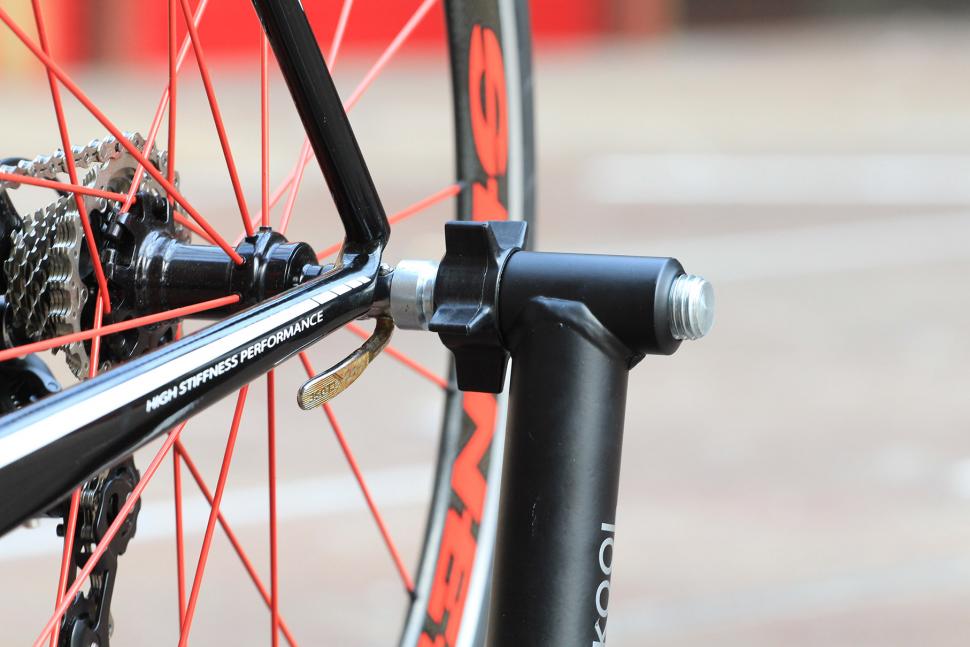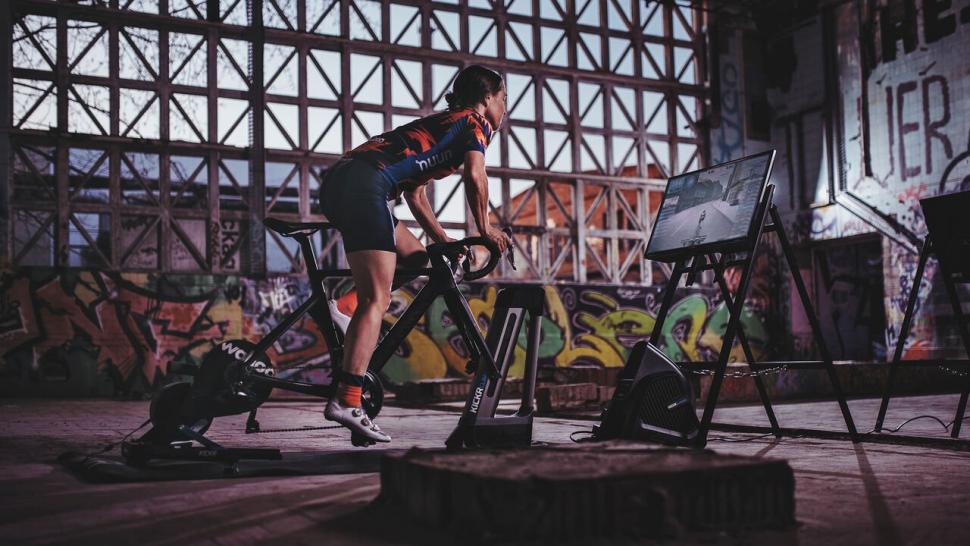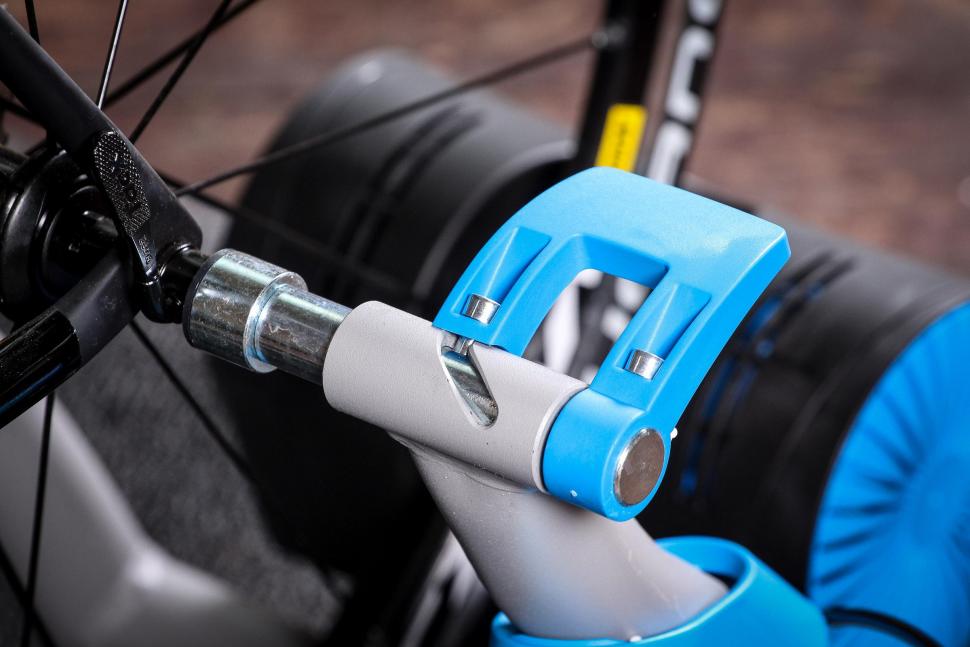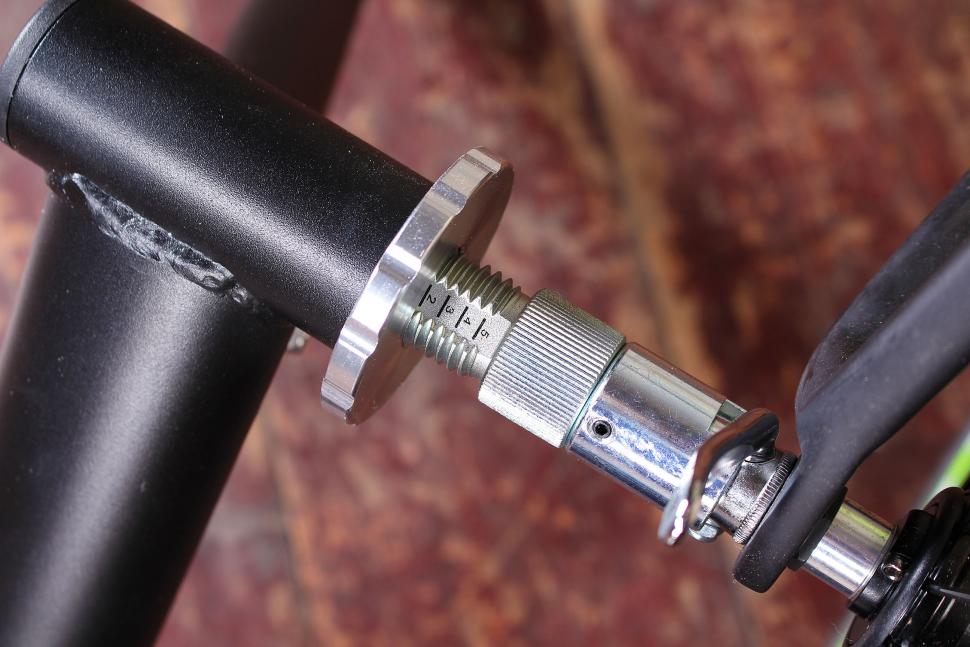- News
- Reviews
- Bikes
- Accessories
- Accessories - misc
- Computer mounts
- Bags
- Bar ends
- Bike bags & cases
- Bottle cages
- Bottles
- Cameras
- Car racks
- Child seats
- Computers
- Glasses
- GPS units
- Helmets
- Lights - front
- Lights - rear
- Lights - sets
- Locks
- Mirrors
- Mudguards
- Racks
- Pumps & CO2 inflators
- Puncture kits
- Reflectives
- Smart watches
- Stands and racks
- Trailers
- Clothing
- Components
- Bar tape & grips
- Bottom brackets
- Brake & gear cables
- Brake & STI levers
- Brake pads & spares
- Brakes
- Cassettes & freewheels
- Chains
- Chainsets & chainrings
- Derailleurs - front
- Derailleurs - rear
- Forks
- Gear levers & shifters
- Groupsets
- Handlebars & extensions
- Headsets
- Hubs
- Inner tubes
- Pedals
- Quick releases & skewers
- Saddles
- Seatposts
- Stems
- Wheels
- Tyres
- Health, fitness and nutrition
- Tools and workshop
- Miscellaneous
- Buyers Guides
- Features
- Forum
- Recommends
- Podcast
feature
 Tacx Booster -1.jpg
Tacx Booster -1.jpgIs it okay to use your bike on a turbo trainer?
If you use your bike on a turbo trainer, does the warranty still apply? The answer is: it depends.
This issue reared its head on Twitter when Specialized (@iamspecialized) said:
“We do not design or test bicycles for trainer use and do not recommend carbon-fibre bikes on a trainer which is rigidly attached.”
That’s interesting because a whole lot of us use carbon-fibre bikes on trainers, especially during winter, and it’s becoming ever more popular thanks to apps like Zwift that make the experience more interesting.
Find out how to get started on Zwift here.
Trainers are also useful for warming up and cooling down at races. You’ll always see Team Ineos riders on Pinarellos fixed to Wahoo Kickr direct-drive trainers, for example, within minutes of finishing a race – although they don't need to worry about warranties.
So are we taking a chance by fixing a bike to a turbo trainer or not? And does it make a difference whether that bike is metal or carbon-fibre?
We asked some of the biggest bike brands.
Specialized
It makes sense to start with Specialized. The US brand added an addendum to its Bicycle Owner's Manual: “There are lots of different trainer types available, including wind trainers, magnetic trainers, fluid trainers, trainers that attach directly to the bicycle, rollers, and others. Depending on the trainer type and use, it may potentially apply unusual forces on your bicycle, wear parts, and/or weaken or damage your bicycle. Use a trainer at your own risk.
“This is especially true for composite or carbon-fibre bicycles rigidly attached to the trainer. Improperly mounting your bicycle in a trainer or using an incompatible trainer may also damage it. Always follow the trainer manufacturer's instructions and consider using an old bike with a metal frame and components you are not using on the road.
“If you use your Specialized bicycle on any type of trainer, your Authorised Specialized Retailer should conduct a periodic safety inspection. When you take your bicycle off the trainer and back out on the road, always conduct a Mechanical Safety Check and make sure nothing is loose (eg wheels are correctly secured).
“Warning! Specialized does not design or test bicycles for trainer use. Using your Specialized bicycle on a trainer may compromise the safety of the bicycle and may void your warranty.”
Canyon
Good news from Canyon, who have updated their advice recently.
“We revisited our strength testing cycles for past and present bikes – so have been able to approve many models for stationary trainer use,” says Canyon’s Jack Noy.
And it's an extensive list. Canyon's latest advice is that “All Aeroad, Ultimate, Endurace, Grail, Inflite, Speedmax and Exceed bikes for all model years are now approved for turbo trainer usage without voiding your warranty.”
There are a couple of conditions, including “the trainer must clamp on to the bike's rear axle (not to the frame)”. Noy says that the rear axle includes the dropouts, so wheel-off trainers are fine.
He says: "it can’t be a trainer that clamps to the frame tubes etc, but direct drive stuff is all good — using the dropouts as the interface."
Trek
Trek doesn’t specifically rule out turbo use for bikes made of any material, but it points out that frames are designed to move and flex.
“As soon as you start to clamp them down it limits how they're designed to move,” says Trek’s Jez Loftus. “This generally isn’t a problem but factors like how tightly the clamp is adjusted come into play.”
A common issue is under-tightening the clamp, causing the bike to bounce about, according to Trek. Overt-tightening can cause issues too.
“We use all our demo bikes in fit classes on turbos and they've been fine,” says Jez Loftus. “Thru axles probably help as well.”
If a bike used on a trainer does get damaged, Trek direct you to register a claim through one of its dealers, preferably the one from which you bought it.
If the dealer is unsure they'd send the bike back to Trek for examination and the brand would make the call. If the damage is deemed to fall outside of the warranty, Trek would offer a crash replace frame which comes with a reasonable discount.
Giant
Giant doesn’t have a blanket ban on the use of its bike on turbos either.
“If there was an issue it would be taken on a case by case basis looking at the type of trainer, the skewer that was used and also what the damage is,” says Giant’s David Ward.
“For turbos that require the back wheel to come out and use a custom axle from the turbo brand our road disc models use 142x12mm with a 1.5mm pitch for reference.”
Check out our turbo trainer reviews here.
Cannondale
Cannondale’s policy is set out in its owner’s manual.
“If you ride a trainer that requires the removal of the front wheel and clamps the fork dropouts: Be sure your fork quick release is tight! Relative movement will wear parts, weaken and damage your bike.
“If you ride a trainer that holds the bike up by clamping the rear quick release between two cones: Take off the nice, lightweight quick release that came with your bike. Substitute a heavy, classic all steel quick release and clamp it tight! Relative movement will wear parts, weaken and damage your bike.
“Be particularly cautious with a carbon frame or fork. Carbon is relatively soft, not abrasion resistant. If there is any relative movement, carbon will wear quickly.
“If you ride a trainer a lot, consider using an old bike. Corrosion from sweat will take its toll. Weight is irrelevant. Save wear on your expensive components.”
Merida
Merida says that using its road frames for indoor training does not affect the warranty as long as there is no mechanical contact between the frame (chainstays, seatstays, dropouts) and the turbo trainer.
Boardman
Boardman Bikes is very clear.
“At Boardman, we’ve always seen Turbo training as an important part of year round riding” says Boardman’s Matt Dowler. “As such, our lifetime warranty on frames and forks isn’t affected by turbo use. As long as you’re using the correct QR skewer or Thru-Axle adapter, Boardman frames are designed to handle the extra stress of turbo training.”

Bianchi
There's nothing in Bianchi's owner's manual to say a bike isn't warrantied against turbo trainer damage.
“I think the only issue would be if someone gets too excited in a sprint and falls over," says Bianchi's Andrew Griffin. "That would be a crash and therefore not covered under warranty.”
Mat has been in cycling media since 1996, on titles including BikeRadar, Total Bike, Total Mountain Bike, What Mountain Bike and Mountain Biking UK, and he has been editor of 220 Triathlon and Cycling Plus. Mat has been road.cc technical editor for over a decade, testing bikes, fettling the latest kit, and trying out the most up-to-the-minute clothing. He has won his category in Ironman UK 70.3 and finished on the podium in both marathons he has run. Mat is a Cambridge graduate who did a post-grad in magazine journalism, and he is a winner of the Cycling Media Award for Specialist Online Writer. Now over 50, he's riding road and gravel bikes most days for fun and fitness rather than training for competitions.
Latest Comments
- quadtodd 1 hour 38 min ago
And 3 of the 'workers' are just leaning!
- yellowjack 2 hours 9 min ago
Same sketch everywhere, or so it seems. Take Whitelegg Way in Bournemouth. Wide cycle lanes put in both sides of a (formerly very wide) two lane...
- yellowjack 2 hours 26 min ago
Sounds cool. I haven't taken an "unnecessary flight" since 1992. Flown many times since then for work, but you can't patrol the Iraqi desert, or...
- NOtotheEU 2 hours 50 min ago
My first thought on reading the headline was "ooh, has Clevedon put in covered bike parking now?".
- TheBillder 3 hours 46 min ago
I rented a car a few weeks ago, a Skoda Octavia (needed a big car for a weekend), and the ride was astonishingly good compared to my own 10 year...
- Sriracha 4 hours 43 min ago
Shimano were castigated for not bringing on new factories to meet pandemic demand, thus gumming up the supply chain. Their argument at the time was...
- Romanp 4 hours 52 min ago
I figured out a reason of that squeaking noise. I have xpresso 2 and 7, and also xpro 10 pedals, and that squeaking isn't present only at Xpresso 2...
- MichaelWinnerRIP 5 hours 53 min ago
Italian tourist and pussycat in Portugal.







Add new comment
33 comments
Not really. With the correct turbo specific QR the bike's frame shouldn't be touching the turbo.
Not really. If a direct drive trainer then the dropouts are touching the trainer, so reads like it wouldn't be covered. Turbo specific skewer or thru axle and your clamping onto the ends of the axle, not the dropouts.
I like Cannondale's wording in respect of turbo use.
Pages